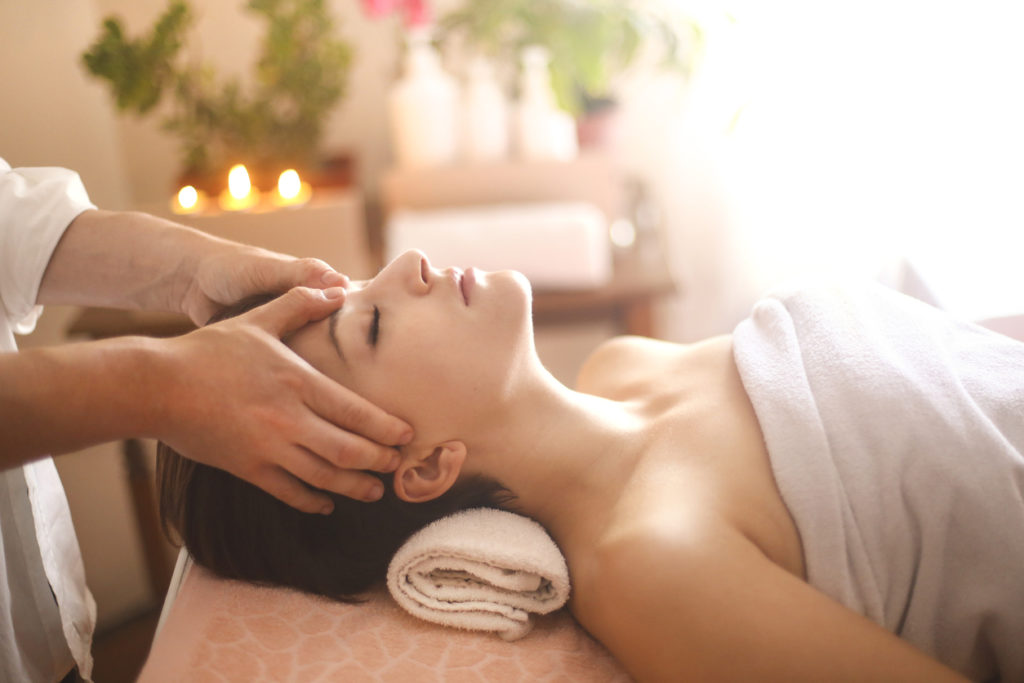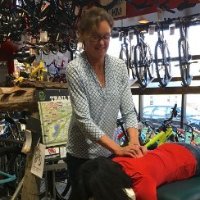We asked Joan M. Laubacher to explain some of the benefits of massage, and reasons for seeking out massage therapy?

When’s the last time you received a massage?
According to the American Massage Therapy Association (AMTA) 2015 consumer survey, an average of 18% of US adults received at least one massage from July 2014-July 2015. And in this same study, 27% of the population received a massage in the previous five years. That’s a lot of happy people! As a massage therapist, I can see and feel the value of touch with massage therapy. In a world that pulls us out of our body, massage helps us to reconnect.
So if the statistics reveal a good segment of our society valuing massage, what were the reasons that got them interested in massage in the first place?
52% from that first statistic (the 18 percent who received a massage over the span of a year) did so for medical or health reasons, including pain management, soreness/stiffness/spasms, injury prevention, or overall wellness. More than 90 percent of those interviewed agreed that massage is effective in reducing pain.
In the AMTA 2015 Consumer survey, the medical profession led the way in encouraging their patients to seek massage. This suggests that massage is being discussed more in this clinical setting, which is a huge breakthrough for massage. While people who frequently receive massages can see the obvious health benefits, the stamp of approval from those under the medical umbrella is a big deal.
So what happens to the body, therapeutically, during a massage?
Well, lots of things. Individuals may seek a deep-tissue massage to remain feeling healthy and active, which is the same thing as wanting to stay injury-free. When giving a deeper touch massage, it’s important to first warm up the body. Warming up the body with different types of massage strokes that are not too-deep, encourages oxygenated blood to whoosh through soft tissue layers. Like priming a pump, the muscles are more apt to respond to what comes next, a deeper focused massage session.

Importantly, massage touches more than just your muscles. On top of everything is your largest organ, skin, and the spidery web connective tissue that covers us from head to toe, the fascial layers. While it’s often the musculoskeletal system that grabs the headlines, there is much more going on that is affected by massage touch. In all there are eleven central “systems” in the body: Cardiovascular/Circulatory (arteries and veins) Digestive (what we taken in and eliminate), Endocrine (hormonal balance), Integumentary (skin), Lymphatic (immune system), Musculoskeletal (a framed body in motion), Nervous (brain to body communication), Renal (bodily fluid and blood flow), Reproductive (sex organs), Respiratory (mechanism for breathing) and finally, the Vestibular system (balance and movement). When receiving a full body massage, the touch will impact these systems in a positive way.
I often hear back from clients how massage has helped with a better night’s sleep. That’s because massage encourages a Parasympathetic Nervous System (PSNS) response. A what? Your PSNS represents half of your autonomic nervous system, along with the Sympathetic Nervous System. Have you heard of the term: “fight or flight”? This is a hormonal response initiated by the Sympathetic nervous system. Think clammy hands and dilated pupils! Run fast and get out of danger! If taxed, these become better known as your stress hormones. Your PSNS system is known as “rest and digest” and influences slowing your heart rate, decreasing blood pressure, allowing for a good meal and night’s sleep! So here’s to your good health and a healthy PSNS response!
Our guest blogger Joan M. Laubacher is not only an experienced massage therapist and esthetician; she has a background in brand marketing and small business consulting. She has worked for outdoor industry giant Patagonia, consulted for small business owners, and was a contributor to a startup in the natural foods industry. Currently, she is the owner of Joan Laubacher Massage & Skin Care and is an Instructor at the Boulder Massage Therapy Institute. Joan has lived in Boulder, CO since 1992.
Experience it for yourself
Not Sure? Try it out risk-free.
Receive a complimentary brochure with product details on our line of products.